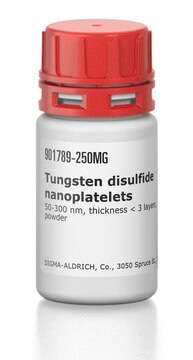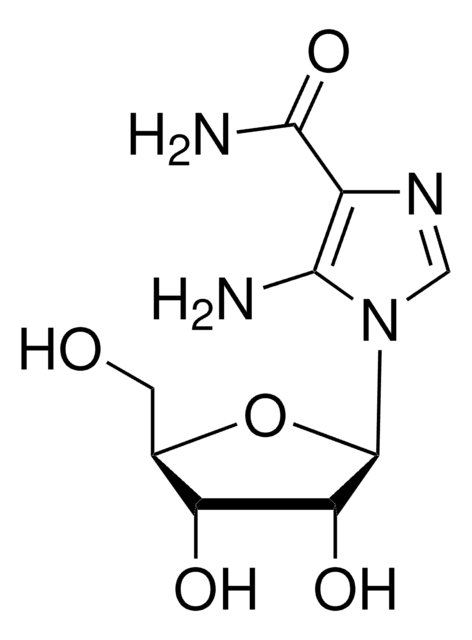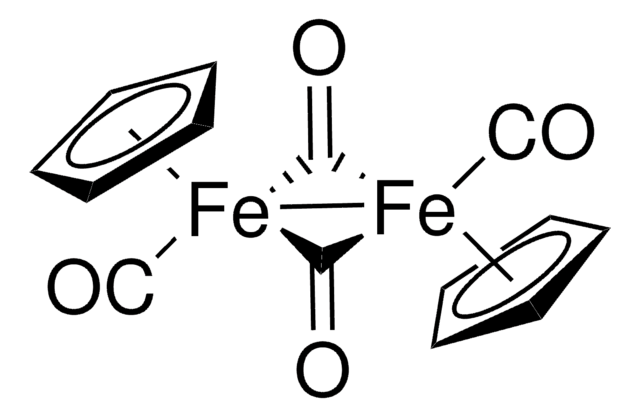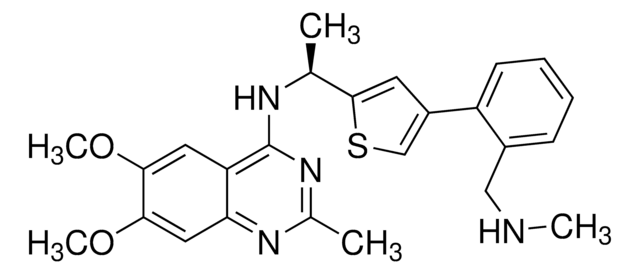Wichtige Dokumente
907375
H-L-Photo-methionine HCl
≥95%
Synonym(e):
(S)-2-Amino-4-(3-methyl-3H-diazirin-3-yl)butanoic acid hydrochloride, (S)-2-Amino-4-(3H-diazirin-3-yl)pentanoic acid hydrochloride, Diazirine amino acid, Photo-Met, Photo-crosslinking amino acid, Photoprobe building block
About This Item
Empfohlene Produkte
Assay
≥95%
Form
powder
Eignung der Reaktion
reaction type: solution phase peptide synthesis
Verfügbarkeit
available only in USA
Anwendung(en)
peptide synthesis
Lagertemp.
2-8°C
Anwendung
Product can be used with our line of photoreactors: Including Penn PhD (Z744035) & SynLED 2.0 (Z744080)
Sonstige Hinweise
A vimentin binding small molecule leads to mitotic disruption in mesenchymal cancer
Cell-Based Proteome Profiling of Potential Dasatinib Targets by Use of Affinity-Based Probes
Proteome profiling reveals potential cellular targets of staurosporine using a clickable cell-permeable probe
Photo-leucine and photo-methionine allow identification of protein-protein interactions in living cells
Fishing for Drug Targets: A Focus on Diazirine Photoaffinity Probe Synthesis
Photo-affinity labeling (PAL) in chemical proteomics: a handy tool to investigate protein-protein interactions (PPIs)
Ähnliches Produkt
Signalwort
Danger
H-Sätze
Gefahreneinstufungen
Self-react. C
Lagerklassenschlüssel
5.2 - Organic peroxides and self-reacting hazardous materials
WGK
WGK 3
Flammpunkt (°F)
Not applicable
Flammpunkt (°C)
Not applicable
Hier finden Sie alle aktuellen Versionen:
Analysenzertifikate (COA)
It looks like we've run into a problem, but you can still download Certificates of Analysis from our Dokumente section.
Wenn Sie Hilfe benötigen, wenden Sie sich bitte an Kundensupport
Besitzen Sie dieses Produkt bereits?
In der Dokumentenbibliothek finden Sie die Dokumentation zu den Produkten, die Sie kürzlich erworben haben.
Unser Team von Wissenschaftlern verfügt über Erfahrung in allen Forschungsbereichen einschließlich Life Science, Materialwissenschaften, chemischer Synthese, Chromatographie, Analytik und vielen mehr..
Setzen Sie sich mit dem technischen Dienst in Verbindung.









